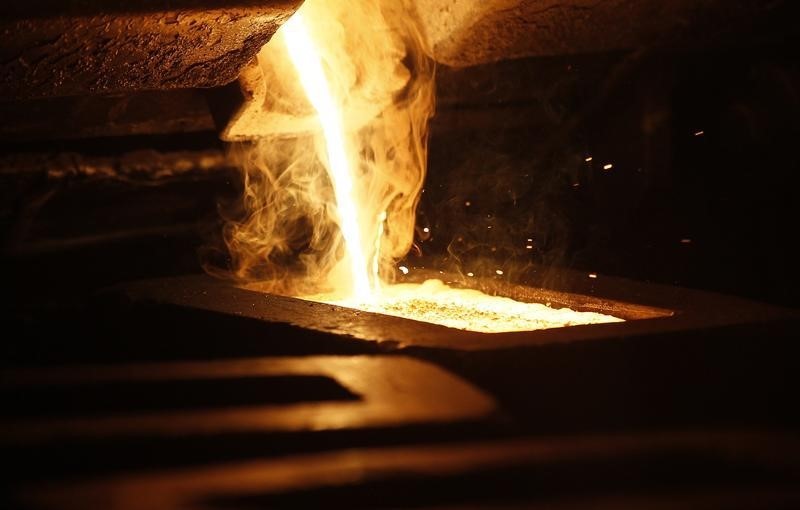Investing.com - Gold prices rose on Thursday on perceptions that slowing global growth means that the trend to lower interest rates remains intact, even after the Federal Reserve appeared to put any further easing on hold for the foreseeable future.
Figures out earlier on Thursday showed the Hong Kong economy contracted 3.2% in the third quarter, while China’s state purchasing managers index showed manufacturing contracted for a sixth-straight month, and at the fastest rate since February. Meanwhile, the euro zone's limped along at an annual rate of 1.1%, albeit the 0.2% quarterly gain was at the top end of expectations.
By 11:25 AM ET (1525 GMT), Gold futures for delivery on the Comex exchange were up 1.1% at $1,513.50 a troy ounce. Spot gold was up 1.0% at $1,511.28.
Silver futures were also higher, rising 1.1% to $18.09 an ounce, while platinum futures were down 0.1% at $930.15.
Treasury yields also fell on lingering uncertainties over the U.S.-China trade dispute, despite President Donald Trump reassuring via Twitter that the so-called ‘phase-1’ deal – a temporary truce that does little address the underlying causes of the dispute – is still on track to be signed in the coming weeks. The U.S.two-year yield fell eight basis points to 1.55%, while the 10-year fell 10 basis points to 1.70%
Likewise the hopes for a quick resolution to Brexit uncertainty, which triggered selling of haven assets earlier in the month, have also ebbed as it has become clear that the U.K. election now scheduled for Dec. 12 carries a big risk of again failing to resolve the issue, just as in 2017.
As such, some expect the Fed to come under pressure to ease again relatively soon.
“The Fed’s reaction function has clearly shifted, and it looks as though the hurdle to more cuts is higher than it was before,” ABN AMRO (AS:ABNd) analyst Bill Diviney wrote in a research note. “We think weaker data will ultimately force the Committee’s hand, though it looks as though it will take longer for the Fed to be convinced of the need for more accommodation. We therefore now expect one further 25 basis point cut in Q1 2020.”
